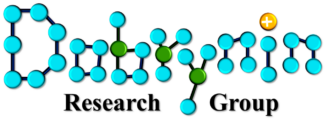Zilu Wang, Heyi Liang, and Andrey V. Dobrynin
3-D printing is a revolutionary manufacturing technique which makes it possible to fabricate objects of any shape and size that are hard to reproduce by traditional methods. We develop a coarse-grained molecular dynamics simulation approach to model the continuous liquid interface production (CLIP) 3-D printing technique. This technique utilizes a continuous polymerization and cross-linking of the liquid monomeric precursor by the UV light within a thin layer while pulling the cross-linked polymeric object out of a pool of monomers. Simulations show that the quality of the shape of the 3-D printed objects is determined by a fine interplay between elastic, capillary, and friction forces. Using simulation results, we identify the source of the object shape deformations and develop a set of rules for calibration of the parameters to meet the accuracy requirements. Comparison between different continuous 3-D printing setups shows that proposed modifications of the printing process could improve quality and accuracy of the printed parts.

